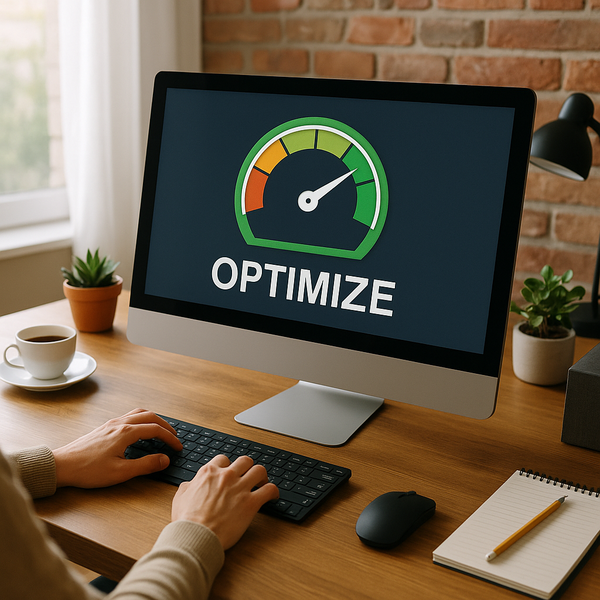
It's a common frustration: your computer, once speedy and responsive, now crawls at a snail's pace. Simple tasks take forever, programs freeze, and overall productivity plummets. A slow computer isn't just annoying; it can significantly impact your work, entertainment, and overall digital experience. But don't despair! There are many effective ways to diagnose and resolve the issues causing your PC to lag, often without needing expensive repairs or replacements.
Why Is Your Computer Running Slow? Common Culprits
Before you can fix a slow computer, it helps to understand why it's happening. Several factors can contribute to sluggish performance. One of the most frequent causes is too many programs running simultaneously, especially those that launch automatically at startup. These programs consume valuable RAM and CPU resources, leaving less power for the tasks you're actively trying to perform.
Another major issue is insufficient disk space or a fragmented hard drive. When your hard drive is nearly full, the operating system struggles to find space for temporary files and virtual memory. Fragmentation, more common on older HDDs than SSDs, means file pieces are scattered across the disk, slowing down access times. Malware and viruses are also notorious performance killers, often running in the background and consuming resources or causing system instability.
Outdated hardware can also be a significant bottleneck. If your computer is several years old, its components, such as the CPU, RAM, or storage drive, may no longer meet the demands of modern software and operating systems. Bloatware, pre-installed software you don't need, and temporary files that accumulate over time also take up space and slow things down. Finally, an overloaded web browser with too many tabs, extensions, or a large cache can also make your browsing experience frustratingly slow.
Quick Fixes to Try Immediately
Sometimes, the solution to a slow computer is surprisingly simple. The first and most basic step is often just restarting your computer. This clears the RAM, stops unnecessary background processes, and can resolve temporary glitches that are slowing things down. It's the digital equivalent of hitting a reset button.
Cleaning up temporary files is another quick win. Windows and other operating systems accumulate temporary files from browsing, software installations, and system processes. These can take up significant space. Using built-in tools like Disk Cleanup (on Windows) can quickly free up several gigabytes. While you're at it, empty your Recycle Bin.
Managing startup programs is crucial. Many applications configure themselves to launch automatically when you turn on your computer. While some are necessary, many aren't. Access your Task Manager (Ctrl+Shift+Esc on Windows) and navigate to the 'Startup' tab to disable programs you don't need running automatically. Be cautious not to disable essential system processes.
Regularly scanning for malware and viruses is vital. Even with an antivirus program installed, ensure it's up-to-date and run full system scans regularly. Malware can run silently in the background, consuming resources and compromising your data. Removing it can lead to a noticeable performance boost.
Deeper Optimization and Maintenance
If the quick fixes don't provide a lasting solution, you might need to delve deeper. Uninstalling programs you no longer use is essential. Not only does this free up disk space, but it also removes associated background processes and services that might be running unnecessarily. Go through your installed applications list and remove anything you don't need.
Defragmenting your hard drive (if it's an HDD) can improve performance by organizing fragmented data. For SSDs, this process is unnecessary and potentially harmful; SSDs use a different technology, and the operating system handles optimization through TRIM commands. Ensure TRIM is enabled for your SSD.
Upgrading your hardware is often the most impactful solution for an older machine. Adding more RAM (Random Access Memory) allows your computer to handle more programs and tasks simultaneously without slowing down. Replacing a traditional Hard Disk Drive (HDD) with a Solid State Drive (SSD) is perhaps the single biggest upgrade you can make for overall system speed, dramatically reducing boot times and application load times.
Ensuring your operating system and drivers are updated is also important. Updates often include performance improvements and bug fixes. While sometimes updates can cause temporary issues, keeping your system current is generally best practice for speed and security.
Consider adjusting visual effects. Modern operating systems use various visual effects (animations, transparencies) that consume system resources. On older or less powerful hardware, disabling some of these effects through system performance options can lead to a snappier interface.
For persistent or complex issues, or if you suspect a hardware problem, seeking professional computer repair services might be the best course of action. Technicians can diagnose hardware failures, perform complex software fixes, and even help with upgrades.
Optimizing your web browser can also improve overall system responsiveness, especially if you spend a lot of time online. Reduce the number of open tabs, remove unnecessary extensions, clear your browser cache and cookies, and consider using a browser known for better performance or lower resource usage.
Maintaining a clean and optimized computer requires ongoing effort. Regularly performing the steps outlined above, keeping your software updated, and being mindful of what you install and run will help keep your PC running smoothly for longer. Don't let a slow computer hold you back – take action today to restore its speed and efficiency.

